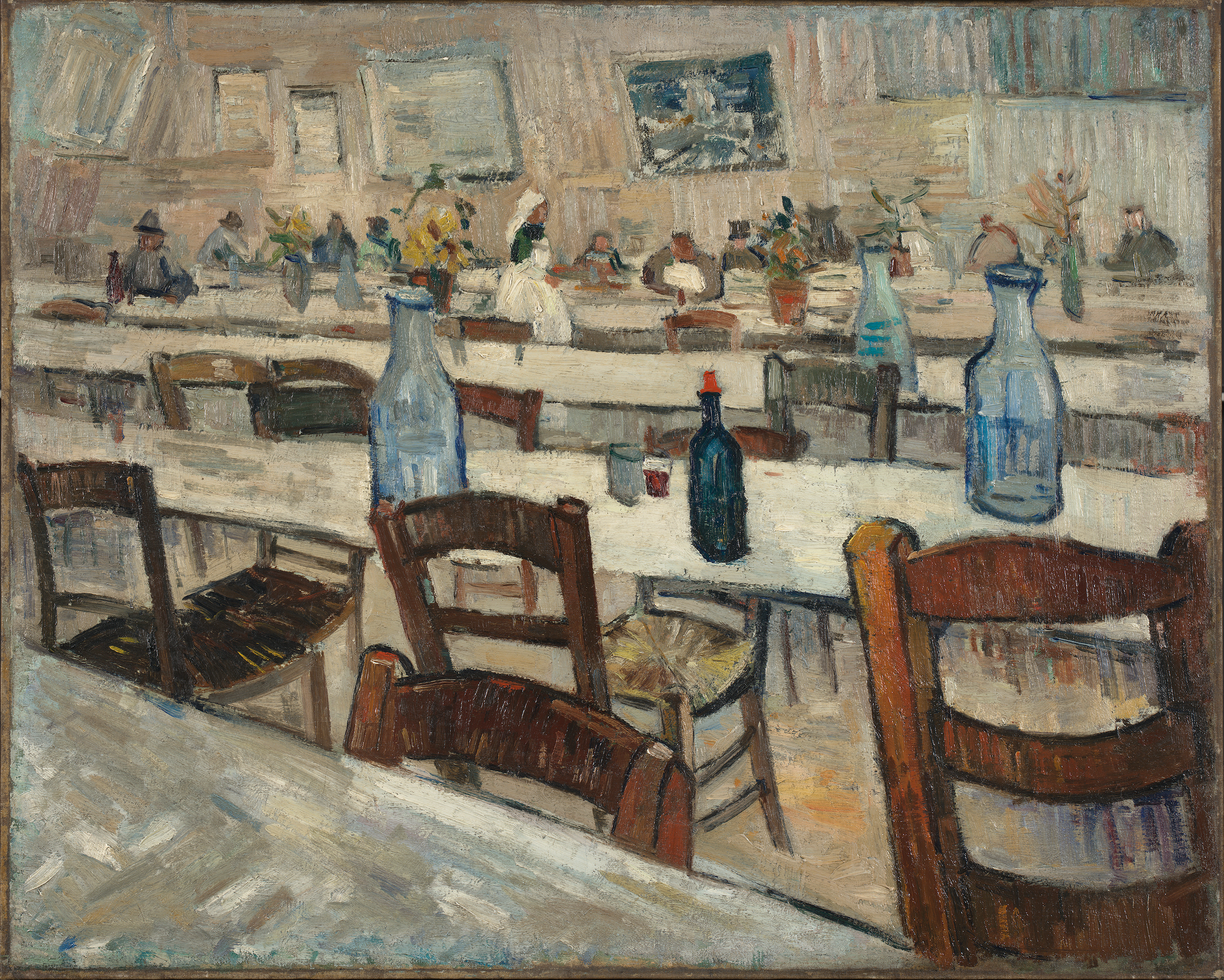Experts at the Van Gogh Museum in Amsterdam say three paintings in private collections previously believed to be by the artist are fakes, including one that was authenticated by the museum and sold for nearly $1 million at Christie’s in 2011.
A report published this month in the monthly British art journal Burlington Magazine and authored by Teio Meedendorp, Louis van Tilborgh, and Saskia van Oudheusden sheds light on how the three forged works, titled “Head of a Woman,” “Interior of a Restaurant,” and “Wood Gatherer,” fooled private collectors and even the artist’s namesake institution for years. The findings, the report states, “pose intriguing questions about their status, as either innocent copies or fakes intended to deceive.”
The most remarkably deceptive painting, “Head of a Woman,” believed to have been completed between 1902 and 1909, passed a 2010 technical study involving X-rays and microscopic examination and was deemed consistent with Vincent van Gogh’s palette and paint application technique. It was sold just a year later to a private collector at Christie’s in London.
The auction house has not yet replied to Hyperallergic‘s request for comment.
Researchers who performed the initial analysis on “Head of a Woman,” however, did raise concerns over the portrait subject’s facial features, writing in 2010 that the “detailed strokes near the mouth and eyebrows seem somewhat strange for a van Gogh.” However, they determined that “it is hard to distinguish what was there originally and what was added later,” suggesting that the inconsistencies may have been due to subsequent restoration attempts.
“Head of a Woman” did not have a clear provenance, largely disappearing from records after 1945 before it cropped back up again in the hands of the collector Gerbrand Visser. It was in the possession of the Wentges family starting in 1909.
The researchers of the 2010 study did not test the pigments nor perform material analysis on the portrait, the report said, which could have alerted the auction house to authenticity concerns prior to the sale.
It was only when a French family brought a nearly identical portrait titled “Head of a woman with a green bonnet” (c. 1885) to the Van Gogh Museum in 2019 that “Head of a Woman” was outed as inauthentic, the Burlington Magazine article notes. The authors wrote that van Gogh did not make copies of his work during his time in the Dutch city of Nuenen, where he supposedly painted the portrait, rendering two versions of the same scene unlikely.
In 2022, a comparative study determined that the work brought to them in 2019 was the original, finding that the canvas used came from the same roll as van Gogh’s other Nuenen paintings. Pigment analysis also revealed an absence of Naples yellow and vermillion, typical of van Gogh’s palette, in the fake “Head of a Woman.”
The authors wrote that the inauthentic painting was “executed by a copyist who almost certainly worked from the original and did his or her utmost to replicate Van Gogh’s painting as accurately as possible” between 1902 and 1909.
The copy, the expert trio judged, was likely not crafted with “fraudulent intent.”

They did, however, suggest in the report that “Interior of a Restaurant,” initially thought to have been painted in 1888, was produced as a deliberate forgery in the 20th century. Researchers noted the presence of blue pigment not patented until 1935. Like “Head of a Woman,” the work popped up at the Van Gogh Museum in 2021 for analysis with an unclear provenance. However, it carried a certificate of authenticity from 1957 issued by art historian Jacob Baart de la Faille, who worked on the first catalogue raisonné of the work of van Gogh.
Even with support for its authenticity, the Van Gogh Museum analysts deemed it a dupe based on “broad and sketchy brushwork” that did not resemble the artist’s technique.
Unlike the original it was based on, housed in a private collection, the replica also contained sunflowers, tipping off the researchers to “not just an innocent, clumsy copy, but a deliberate forgery.”
The final work examined in the Burlington Magazine report was “Wood Gatherers” (c. 1904–1912), thought to be a copy of another work, “Wood Gatherers in the Snow” (1884). The watercolor was acquired by the Oldenzeel Art Gallery in Rotterdam in 1912. When it was brought to the Van Gogh Museum in 2020, the painting was designated a fake, likely a reproduction of a black-and-white photograph of the authentic painting that was published in 1904. The copy omits a wooden stick pictured in the original.
The authors said that inauthentic works began to infiltrate the Dutch art market in the early years of the artist’s fame. However, they cannot be certain why these particular works were faked.

